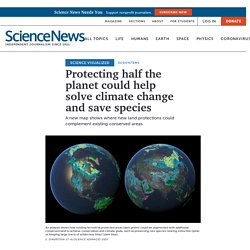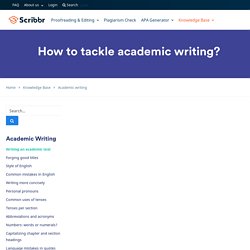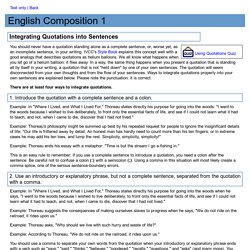

Protecting half of Earth may help solve climate change, save species. Earth faces two interrelated crises: accelerating loss of biodiversity and climate change.

Both are worsened by human development of natural lands that would otherwise allow species to flourish and would store atmosphere-warming carbon, stabilizing the climate. A new study argues that nations can help avert the biodiversity and climate crises by preserving the roughly 50 percent of land that remains relatively undeveloped. The researchers dub that conserved area a “Global Safety Net,” mapping out regions that can meet critical conservation and climate goals in a study published September 4 in Science Advances. Eric Dinerstein, a conservation biologist at RESOLVE, a nonprofit based in Washington, D.C., and colleagues began by mapping out existing protected areas, which cover about 15 percent of land. The team then sequentially added slices of land needed to meet different conservation goals, using existing biodiversity databases. Sign Up For the Latest from Science News. National Museum of African American History and Culture Releases “Talking About Race” Web Portal.
Research shows that many people feel they do not have the information needed to discuss race in a way that is candid, safe and respectful of other viewpoints and experiences.

“The portal offers a wealth of resources to inform and guide discussions—videos, role-playing exercises, targeted questions and more, said Crew.” “We hope that people will use this site to become more comfortable about engaging in honest dialogue and self-reflection.” Talking About Race builds upon decades of work by the museum’s educators. It is the result of extensive research, studies, consultations, and educational resources from these fields: history, education, psychology and human development. How to tackle academic writing? Whether you need to write a paper, an essay, a bachelor’s dissertation, a master’s dissertation or a thesis, they all need to be written in academic English.

Academic English can be very different from the English you use when you write an email, a news article or a letter. We lay down all the different aspects of academic writing and show you how to write a good English academic text. Specific rules for academic writing. Lesson 1.3 Activity: Analyzing Investigation Writing. Writing for a purpose. Integrating Quotations into Sentences. You should never have a quotation standing alone as a complete sentence, or, worse yet, as an incomplete sentence, in your writing.

IVCC's Style Book explains this concept well with a good analogy that describes quotations as helium balloons. We all know what happens when you let go of a helium balloon: it flies away. In a way, the same thing happens when you present a quotation that is standing all by itself in your writing, a quotation that is not "held down" by one of your own sentences. The quotation will seem disconnected from your own thoughts and from the flow of your sentences. Ways to integrate quotations properly into your own sentences are explained below. There are at least four ways to integrate quotations. » 5 Most Effective Methods for Avoiding Plagiarism. Cartoon by Pirillo & Fitz Plagiarism.

It’s a concept that puts sour looks on teachers’ faces and sends shudders down students’ spines. When you sit down to write that essay, however, you don’t have to be afraid of unintentionally committing plagiarism. Simply take the time to understand exactly what plagiarism is and the best methods for avoiding it. Paraphrasing. Useful phrases that can be used to introduce paraphrasing. - learn English,grammar,communication,english. 70 useful sentences for academic writing. Back in the late 90s, in the process of reading for my MA dissertation, I put together a collection of hundreds of sentence frames that I felt could help me with my academic writing later on.

And they did. Immensely. After the course was over, I stacked my sentences away, but kept wondering if I could ever put them to good use and perhaps help other MA / PhD students. Ademic Writing Module. Sample scientific texts analysis through textlinguistic approach[#308018] 296314. Notetaking examples. Here are some notes on the water cycle: Hydrological (water) cycle Precipitation & flow: “whether they are typhoons or Scotch mists, mountain torrents or field ditches or city sewers, they are simply water sinking back to base level, the sea.”

Evaporation = the act of passively presenting water to the atmosphere to be soaked up + vaporized by the sun’s energy. Transpiration= evaporation thru plants plant draws water from grd thru roots up to open-pored vessels in leaves, from which it is vaporized. Condensation: as warm air rises it cools -7C every 1000m until it can’t hold it’s cargo of water vapor any longer condenses into clouds, which cool further, condensing further into rain drops. warm front: when warm air advances on cold it rises over it. cold front: when cold air advances on warm + forces it to rise. Note-taking. To use note-taking effectively, you need to understand that its primary value is not in the record you produce, it is in the process itself.

The process of taking notes guides the memory codes you make. Note-taking is a strategy for making information meaningful. Reading Scientific Text. There are many memory strategies that can be effective in improving your recall of text.

However, recent research shows that it is simplistic to think that you can improve your remembering by applying any of these strategies to any text. Different strategies are effective with different types of text. One basic classification of text structure would distinguish between narrative text and expository text. We are all familiar with narrative text (story-telling), and are skilled in using this type of structure. Perhaps for this reason, narrative text tends to be much easier for us to understand and remember. Definition and Examples of Science Writing. Definitions (1) The term science writing refers to writing about scientific subject matter, often in a non-technical manner for an audience of non-scientists (a form of journalism or creative nonfiction).

Also called popular science writing. For more information, visit the website of the National Association of Science Writers. Short science articles.